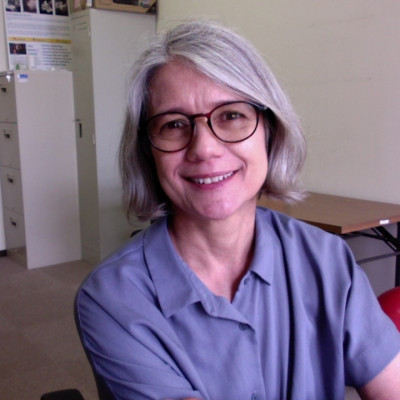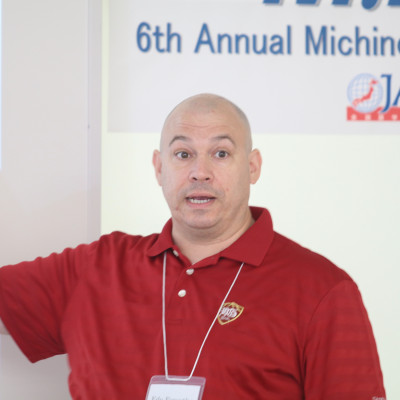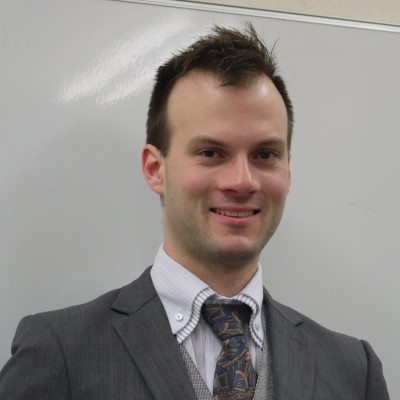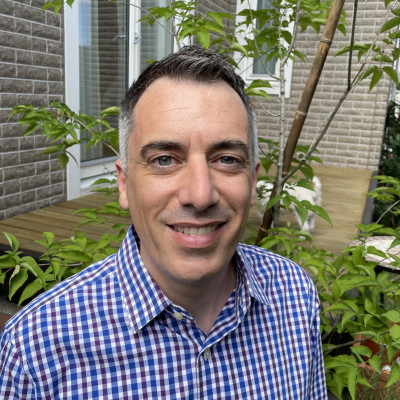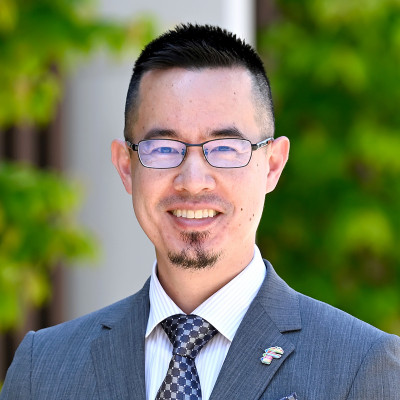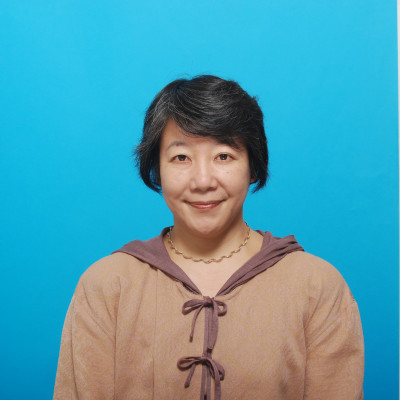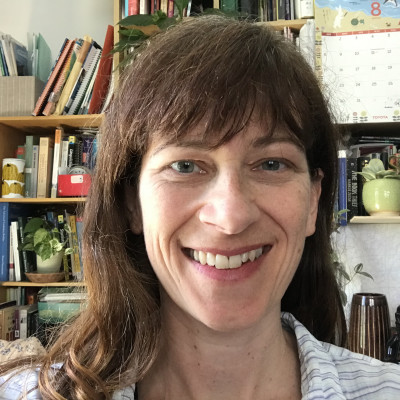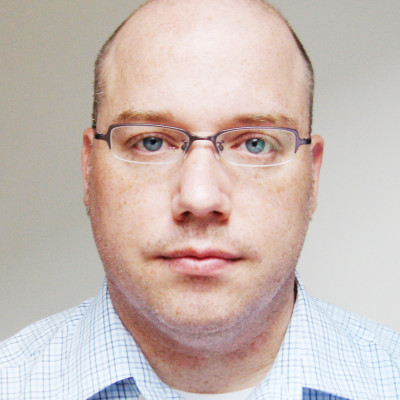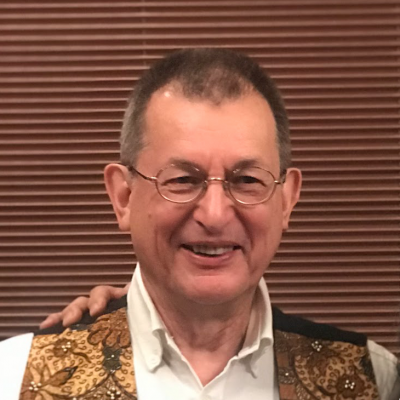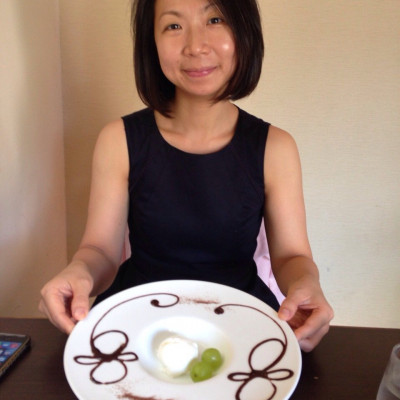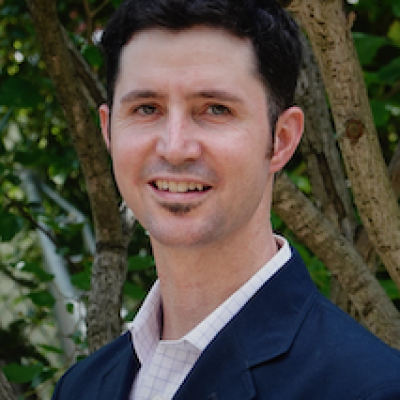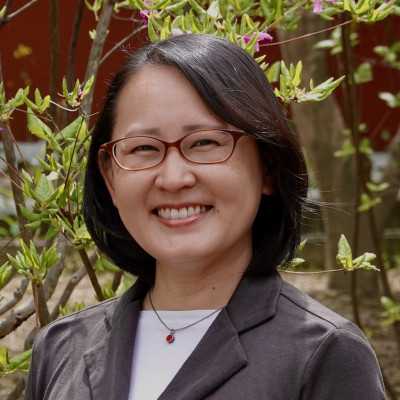Sessions / College and University Educators
Building Zettelkastens for SLA research and the classroom #2912
In this presentation, classroom applications of the Zettelkasten method will be explored. A Zettelkasten is a personal knowledge management system in which notes are created and assigned to ad hoc categories as they emerge. By creating note slips, either in digital or analog form and subsequently creating links among them, a framework of knowledge can be replicated. By relating ideas to each other, students replicate a train of thought. Zettelkastens provide a place to store and, more importantly, organize knowledge, thereby increasing the quality and quantity of learning. Though this system was first used to develop research ideas, it also has applications in the foreign language classroom to serve as a framework in which the learners organize and consolidate what they have learned. In this talk, the presenter will first provide an overview of the literature on Zettelkastens and then demonstrate how to implement this system and apply it to research and, more importantly, the classroom. Finally, learners’ subjective feedback on the effectiveness of this classroom practice will be addressed.
Language Learning COILs: A Pilot Study #2865
Collaborative Online International Learning (COIL) and Language Learning COILs (LLCs) provide opportunities for students to communicate with students from other countries learning the same L2, to communicate with native speakers of the L2, and to develop cultural awareness and understanding. The COVID-19 pandemic has hastened awareness and understanding of how important and useful COIL might be in education. This presentation will report on the outcomes of a LLC held in the fall of 2021 between a English Communication class for first year Japanese university students and a 2nd year Japanese language class at a college in the United States. After a brief outline of the LLC’s content and procedure, I will review the results of a post-LCC questionnaire given to the Japanese students. Results of this pilot study show that students had positive responses to the LCC, and indicated increases in motivation to study abroad, awareness of cultural differences between Japanese and American university students, and participation in regular English classes. The data related to perceived language ability and confidence in using the language is inconclusive and merits further investigation. This presentation might be of interest to any instructor interested in Language Learning COILs.
Exploring the benefits and challenges of using humor in online teaching #2735
Humor can be a vital component of the language teacher’s repertoire, especially considering its positive impact on classroom atmosphere and student participation (Reddington & Waring, 2015). Unfortunately, instructors had to drastically rethink their approach to incorporating humor with the sudden shift to online instruction. Would students still appreciate or even recognize humor use with lessons being taught via online video conferencing?
In order to gain a better understanding of the role of humor in synchronous online teaching, the presenters undertook a mixed methods study, administering a survey to university English language teachers (N = 60) and conducting follow-up interviews with select participants. The Likert-scale items in the survey covered variables such as the benefits, challenges, and approaches to using humor in online teaching. Additionally, open-ended survey items queried teachers about topics such as comparing the use of humor in online and F2F lessons and solutions to the limitations of online teaching. Responses indicate vast differences in opinion, with some participants lamenting the obstacles to incorporating humor into their lessons while others enthused over the unexpected possibilities offered by the novelty of this new teaching environment.
After reviewing the survey results, the presenters will share expanded insights from the follow-up interviews.
Filling Gaps in the English Curriculum with Self-Access Learning Initiatives #2838
Classroom-based language curricula are necessarily “one size fits all”, leading to potential gaps which self-access language learning can address through resources suited to individual learning goals. Moreover, centres can become social communities in which users learn from each other (Mynard, 2019). Through dialogue with learners and faculty, gaps in the English curriculum were identified and initiatives developed within our tight budgetary constraints. The questions that guided the development of our self-access centre were: 1. Why do many CEFR (pre-)A1 level learners rarely visit the teacher-run conversation lounge and what can be done to encourage their participation? 2. How can value be added for bicultural and “returnee” learners who are not well-served by required English classes? 3. What can be done to support the 10-15% of students in the English Department who choose to write their graduation thesis in English, considering their numbers are judged insufficient for a dedicated advanced academic writing class? Details will be provided of ongoing initiatives to encourage participation of lower-level students, involve bicultural and returnee students as active stakeholders, and provide writing support without a writing centre. In addition, presenters will invite ideas from the audience to address these common issues through autonomous learning.
Further Reflections on the Effects of Free Writing in an EFL Writing Class #2724
Japanese university students are often required to perform free writing activities in their English language classes in an attempt to encourage confidence in writing in English. Free writing activities are defined as “the act of writing quickly for a set time from ten to fifteen minutes, just putting down whatever is in the mind, without pausing and worrying about what words to use, and without going back to modify what has been written” (Li, 2007, p. 42). The authors have had their students do free writing activities throughout two years of English composition courses and analyzed the quantitative effects of such activities. In this presentation, the authors will explain the free writing activity tasks used, then provide quantitative data to show results in terms of the number of words written, and finally representative qualitative examples from the students’ reflection on their free writing experiences. This presentation will be an extension of the data presented at JALT2021. Attendees will come away with ideas for how to more effectively employ free writing in their university English language classes in a manner that will align with students’ ideas on free writing for self-improvement.
Understanding the Process of Generating Text in Academic Writing - A Student Case Study #2742
Mastering academic writing is one of the biggest challenges for tertiary level students. Whilst classroom instruction may provide guidance in how to properly construct an essay or research paper, the actual process of writing is one that many students find disorientating. Likewise, once submitted, educators are often left bewildered as to how their teachings so comprehensively failed to be translated into a competent piece of writing. The problem for both parties is that in many cases the most significant moment of the writing process is one the students have received no direction on -- how to actually move between ideas and text generation. Collins and Gentner (1980) claimed it was important to separate idea production from text production with the key component focussed on identifying movement between the ‘content space’ and the ‘rhetorical space’. This applies at both a sentence-construction and paragraph-assembly level. Through the use of Think Aloud Protocols, this presentation will look at how a freshman student navigates moving between her ideas and converting that into text and what writing instructors can learn from this crucial moment of the writing process.
Visual Storytelling in Creative Writing #2813
Maloney (2019) states that creative writing is perhaps "the most under-used tool in the ELT box." Research shows that the benefits of using creative writing in the EFL classroom include raised critical consciousness (Stillar 2013), increased motivation (Smith 2013), and improved acquisition of grammatical structures (Pelcova 2015). This practice-based presentation will outline how one particular aspect of creative writing, screenwriting, can be successfully utilized in the Japanese university classroom. ‘Visual storytelling’ is a form of writing used by screenwriters to communicate on the page images and information that will be seen on screen. The presenter will begin by explaining what visual storytelling is. He will then describe how he teaches a course for university 3rd- and 4th-year students that utilizes visual storytelling techniques to introduce students to creative writing. The presenter will explain how he makes use of short films, feature film clips, and screenplay extracts to foster student creativity. Samples of work done by students will be introduced.
From zero to sixty in 800 words: A first-year university writing program #2855
There are various metrics one can use when comparing cars: fuel efficiency, seating capacity or even speed. For true car enthusiasts, how quickly a car can accelerate from a standstill to the desired cruising speed of sixty miles an hour is often the most important factor. Like a car, how quickly a university writing program can get students up to speed is also a vital measure of success. This presentation will describe the first year of a successful writing program implemented in the English Department of a Japanese private university. All students must complete an 8,000-word graduation dissertation. Unfortunately, many students have had very little experience with English writing beyond sentence-level translations or journal entries before entering university. While academic writing is formally introduced in the second year, this presentation will detail how the steps taken in the first year prepare the students by getting them up to speed as quickly as possible for the increasingly demanding requirements they will encounter in the years that follow. Initially, some information will be given about the current state of writing education in Japanese high schools, before explaining the theory and practical applications of this successful program.
Building an EMI course: Strategies for critical thinking & student efficacy #2883
As part of the national government’s strategy to develop “global human resources,” English Medium Instruction (EMI) has expanded rapidly in Japan (Yonezawa & Shimmi, 2015). Although initially adopted by larger, internationally-oriented institutions, for smaller universities all-English classes provide an opportunity for delivering niche courses that offer engaging content and life skill development. This presentation introduces an introductory seminar for an EMI culture and society course within the English department of a small liberal arts university. The course’s objective is to encourage critical thinking and develop student efficacy, creating internationally minded students with broad perspectives who are skilled at English communication and have a spirit of service. There are obstacles to delivering effective EMI courses in the Japanese context (Morizumi, 2015) and achieving course objectives presents an opportunity to experiment with pedagogical strategies. The presentation introduces examples of strategies currently in practice, including scaffolded group work, exploration of identity and values, and a continual process of feedback. Class material, which draws on the work of previous students, links familiar topics to new information, creating an environment that develops skills, fosters curiosity and critical thinking. The classroom models an inclusive community, where students develop confidence to speak out and share different perspectives.
A tale of two syllabi: towards theory driven CLIL courses #2705
The importance of content and language integrated learning (CLIL) theories is increasing in the Japanese tertiary sector as CLIL courses proliferate, often driven by institutional and teacher interest. Additionally, in undergraduate English language programmes teachers may be tasked with developing content-focused courses that are not explicitly described as “CLIL”, but nonetheless require content to drive language learning. These courses often do not express designs that are both theoretically driven and context-responsive which seems to arise from the lack of a collective understanding of CLIL in Japan. This session will focus on two syllabi taught in the same context and explain how their design has been guided by theories on three levels: educational philosophies such as constructivism and sociocultural theory that underpin CLIL; the conditions of CLIL seen to be advantageous to language improvement and often explained via second language acquisition theory; and the numerous CLIL-relevant conceptual frameworks which also serve to shape understandings of approach. The presenters will examine theoretical similarities and differences between the two syllabi as a way of illustrating the diversity of CLIL implementation in the Japanese tertiary sector. This presentation will be useful for institutions and teachers seeking to implement theoretically driven CLIL courses.
The Importance of the L2 Corpora for Material Development #2834
Most materials developed for EFL learners use corpora derived from L1 texts to help identify what vocabulary and expressions learners need to know (Lee et al., 2019; Verspoor et al., 2012). However, this is problematic because the vast lexicon of the L1 speaker is nearly unattainable for most L2 learners (Hou et al., 2016; Sinclair, 2004). The presentation demonstrates how L2 corpora can be used to help bridge this gap and develop materials for L2 learners based on learners’ backgrounds and needs.
To do this, the presenters will describe the development and use of a large-scale longitudinal corpus consisting of texts collected from first-year Japanese university students (n = 500) at multiple points of time and across different modes of production: academic writing, academic presentations, and academic discussions. They will show how the data from this corpus was correlated to demographic and linguistic information gathered from each participant to help identify the lexical needs of specific groups and, how this information was used to develop materials for different proficiency levels and for different tasks. Finally, they will give examples of how these materials, and the process used to create them, could be adapted to other contexts.
The genre and discovery learning approach to teaching and assessing writing #2890
The process approach (Taylor, 1981; Zamel, 1982; Raimes, 1983) is the most commonly used approach to teaching writing. Since the approach covers from brainstorming to composing, it allows teachers to participate and give feedback in the writing process as a reader, before switching back to their role as a grader. However, it is debatable how much it benefits students, as it lacks focus on a particular skill (content, organization and coherence, language, or writing style). This is notably valid with upper-intermediate or higher proficiency English learners, who tend to be weaker in just one or two aspects, but not all. This workshop will focus on applying the genre approach (Hyland, 2002) with application of the discovery learning method and collaborative writing, to the existing process approach. By minimizing lecturing (where students discover the conventions and linguistic features with the teacher’s guidance) and maximizing peer learning (with more scaffolding than the process approach), students write as a group, receive instant feedback in a class, and eventually work individually. It is an approach addressing all skills step-by-step when teaching half/ one term with blended learning. Lesson plans and sample teaching materials will be provided as examples.
An Analysis of TESOL Teacher Motivation – Values vs. Rewards #2731
The COVID-19 pandemic brought a renewed and much needed spotlight on the plight of teachers at all stages of education. This has been a welcome development, as while motivation of students continues to be a heavily researched area, in-depth looks at teachers have been sparse, with even less focus being directed specifically at second language teachers. The current study sought to explore TESOL teachers’ values related to, and rewards gained from, their teaching jobs and careers. Responses to a modified version of the instrument used in Kassabgy, Boraie, & Schmidt’s (2001) study were obtained from 368 in-service instructors spanning the globe and analyzed by factor analyses. Like Kassabgy et al., intrinsic motivation was found to be central to reported feelings of job satisfaction and motivation, which were positive overall despite disparities between values and the realities of the job. However, slightly different factors and loadings were found from Kassabgy et al., namely a trend away from relationships with coworkers. One hypothesis is that the development of social networking over the past 20 years may be the key factor, revealing a shifting support structure away from the workplace and into cyberspace.
Student Impressions about the Use of Jokes in the EFL Classroom #2906
“Why shouldn’t you write with a broken pencil? Because it is pointless.” Jokes like this fall into the category of dad jokes. The usage of humor in the EFL classroom has been known to increase motivation, increase confidence, keep student attention, and create a positive classroom atmosphere . Furthermore, Japanese university students seem to favor the inclusion of jokes in English courses (Neff & Rucynski 2017). To verify such claims, through a daily warm-up icebreaker of dad jokes and a follow-up questionnaire, this study aimed to gather data about Japanese university students’ impressions of such jokes in the English classroom. This questionnaire surveyed 124 Japanese university students after eight weeks of introducing a joke at the beginning of each class. The students were surveyed about their impressions of jokes in six areas: enjoyment, practical usage of assisting in the comprehension of the meaning of words, motivation, shareability, classroom atmosphere, and general education. The results of the survey were overwhelmingly positive in all categories except for the shareability category. The possible implications of these results are also discussed, such as the recommendation that jokes be used as an icebreaker and the possibility of extended lessons that examine jokes.
Cancelled Student reflection on classroom English use using a reflective tool #2707
This presentation explores how first-year university students monitored and reflected on their English use in a communication-based course that focused on the development of students’ interactive, spoken capacity in English. Utilising the “Numbers” iPad application, students added their target English use percentage to a spreadsheet at the beginning of each class and the percentage of English they actually used at the end of class. The data was automatically charted in a line graph which acted as a visual tool that students could monitor and reflect on over time. Prompted by reflective questions, students twice analysed what they noticed about their English use during a semester before sharing and discussing their reflections with classmates and writing post-discussion summaries. An online survey on the tool and activities was also given at the end of the research period. The presenter will discuss students’ perceptions of the usefulness and enjoyment of the reflective tool and peer discussions, and the influence that these had on the students’ awareness of and attitude towards their English use in the classroom.
What to expect when you’re expecting zemi students #2741
What exactly is a “zemi” and what does teaching one at a Japanese university involve? Although teachers may hear the word “zemi” often, some may not completely know what they are or how they are managed. This presentation will outline the troubles and successes of the presenter’s first year and a half of teaching zemi students at a private Japanese university. It will give practical survival skills to teachers who are either new to teaching zemi students or for those who are hoping to be in a position to be teaching them later in their careers. The presentation will also discuss the difficulties of supervising zemi students’ research and graduation theses. It will be a crash course in what to expect, beginning with how to prepare for your first meeting with your new zemi students and then how to manage them from that point onward. The presenter will share a basic outline of what kinds of things happened during weekly meetings with his zemi students and how the he trained them to undertake their research projects.
How to set up and run a multinational online SOLE session #2872
Self Organized Learning Environments (SOLEs) are brief, intense, enjoyable examples of Problem Based Learning (PBL). Characterized by a lack of teacher-involvement, SOLEs are known as “minimally invasive education.” The teacher’s role is marginalized to facilitator. Sessions have 3 phases. First, the facilitator poses a challenging problem, known in SOLEs as a "Big Question", following which, the session is entirely student-centered. Second, the students work in groups searching the Internet for possible solutions. Third, the students present their findings. In an English Language Learning (ELL) context, the presentations are in the target language, and the facilitator may provide language instruction. The method can be effectively adapted for multinational online collaborations, where students from several countries form diverse communities of practice in breakout rooms. This is an opportunity for communication in the target language and also for learning content related to the Big Question. There are, however, pitfalls in this type of session that can detract from the experience. For example, some students might have poor internet connections, or students might need assistance but lack the language ability to ask. In this presentation, you will learn how to set up and run multinational online SOLEs that are fun and, as far as possible, problem-free.
Using Text Chat to Increase Participation and Engagement #2697
The COVID-19 Pandemic has caused an upheaval in tertiary education, with many classes either going online or becoming hybrid. Students participating in classes through Zoom often report "Zoom fatigue" and a loss of interest and motivation. Some students reportedly "ghost" classes, appearing in name only. In in-person classes, one effective technique to maintain student interest and attention is to periodically ask multiple-choice questions, and have all students respond simultaneously with response cards or through an online answer system. While there are many ways to replicate this during Zoom classes, there are several advantages to eliciting student answers via DM (direct message) in the chat. It is an easy way to elicit a variety of answer types (multiple choice, words, or phrases). DM is low risk; students' answers are invisible to the other students, so no student sticks out. DMs are motivating because the students know that the teacher sees their name alongside their answers. Zoom chat can be saved, thus preserving records of each student's participation. Finally, while these questions are best planned beforehand, DMs can be used spontaneously. This practice-oriented workshop will include a demonstration of how to analyze the chat transcript for quantitative and qualitative participation data.
Teaching the L2 Learner What "They" Want and Need: Japanese University Students’ Exposure to and Attitudes toward Singular They #2712
Singular they (ST) is a generic third-person singular pronoun, as in the sentence “If a student comes, give them a handout.” ST is a well-established part of the English lexicon endorsed by many dictionaries, style guides, and universities, and is the generic pronoun of choice by native English speakers in many contexts (rather than generic he or he/she). However, ST’s acceptance among L2 English speakers varies more widely, influenced by factors such as the amount of exposure to natural English and the socio-linguistics of the L1 language and culture. This exploratory study examines the exposure to and attitudes toward ST by 55 Japanese university students of low-intermediate English proficiency. Results indicate that although participants believed ST to be useful, many also held negative perceptions of it, which seemed to stem mainly from lack of exposure and from grammatical beliefs that conflicted with ST. Despite this, many noted its potential to decrease gender bias, and 74% said they wanted to try using ST more. These results point to a need in Japanese EFL classrooms and textbooks to incorporate ST instruction to match the recommendations of style guides and to reflect the natural transitions in the English language.
Critical pedagogy in ELT: A possible post-pandemic panacea? #2828
Since the onset of Covid-19, government decision-making has significantly affected Japanese universities, their education policies and inevitably English language teachers’ and learners’ lives. Hence, it has provided opportunities to contemplate how the English language classroom has been in light of changes teachers and learners have had to make, and how it could be. As such, these point to a need to envision the future classroom as a place for teachers and learners to make sense of and develop from their experiences. One approach that can help with this is critical pedagogy—the process of critiquing structures of power and oppression that manifest in the classroom. Indeed, as all education is arguably political and higher education is not just in society but supposedly for it, critical pedagogy offers a practical and relevant way to reconstitute the English language classroom via the problematising of current and historical educational contexts and practices. Consequently, this presentation discusses research that used critical pedagogy to understand one English language classroom of the pandemic via a teacher’s and his learners’ responses to such ‘lived’ conditions before utilising these to (re)imagine the classroom post-pandemic with implications for their empowerment and transformation for the greater good.
(Re)imagining Language Learning: Liberal Arts and TOEFL in Japanese Higher Education #2719
For 20 years Japan has recorded among the lowest TOEFL scores in Asia. In 2019, only Laos and Tajikistan had lower average iBT scores (ETS, 2020). This presentation, based upon a joint research project by professors at four major liberal arts universities, posits that one principal reason is that Japanese high school and university curricula focus on language skills and fail to coherently build basic knowledge and vocabulary in the traditional areas of the liberal arts. As the executive director of TOEFL observes, “Most items… on a TOEFL test tend to be drawn directly from university-level textbooks, from the courses that students would typically encounter in a first- or second-year liberal arts class” (S. Gopal qtd in Moody, 2020). The presentation then describes a Content-and-Language-Integrated (CLIL) curriculum that could be adopted across universities in Japan to improve students’ content knowledge and language skills. The presenters argue that this content-and-language-integrated approach will increase students’ readiness for university study as universities implement MEXT-supported EMI courses and expansion of English curricula for foreign students (Underwood and Glasgow, 2019). This in turn can impact TOEFL and IELTS scores, providing a foundation to improve Japan’s overall standing in international measures of language proficiency.
Orchestrate or Pontificate #3292
Many of us teachers get easily sucked into a "Chalk & Talk" style of teaching in our oral communication classes. It is essential to give your students the opportunity and space to develop their oral communication skills. By doing this your students will actually want to come to class. This workshop will present a bundle of ideas to help you hand over to your students so that you may stand back and observe their progress.
Cancelled Developing spontaneity in speaking through FlipGrid videos #2822
Throughout a semester of distance learning, a class of higher-level English-major students in a speaking course were required to make several video presentations on FlipGrid. To overcome Japanese students’ tendencies towards wanting to read polished scripts or deliver memorised speeches, the requirements for each video were designed to steer the students towards producing more informal and conversational videos. For example, in some videos students were required to walk while speaking in order to prevent them from reading. It was hoped that through feedback based on carefully-designed rubrics, some of the natural spontaneity that would ordinarily be fostered within a conversational classroom environment could be be developed within asynchronous distance learning.
A survey was administered at the end of the semester which ascertained, amongst other things, that the students felt that their speaking skills had improved through the semester’s video assignments. Later, with the students’ consent, independent raters were asked to judge certain aspects of both early-semester and late-semester videos of some of the students. These ratings of students’ apparent willingness to be spontaneous and the degree to which they appeared to avert making ‘errors’ will also be discussed.
Sharing Slices of Life: Weekly Blogging Assignment for First-year University Students #2696
This session will introduce a weblog assignment for students in a university-level academic English class. It is a semester-long, on-going assignment that exists alongside their academic writing projects. The blog assignment is titled “Slice of Life,” and it requires students to publish one blog entry every week that gives readers insight into their everyday life. In addition, every week, each blogger will read the entries published by their peers, and leave relevant comments on at least two of their classmates’ blog entries.
The “slice of life” entry for this assignment can be a short narrative about a segment of their day, a poem depicting a small moment in time, or a collection of photos, videos and/or words describing the everyday experience. The students are encouraged to use the language creatively for communication purposes, with the aim to improve their comfort confidence level in using the language, as well as providing opportunities for using L2 for real communication.
In this poster session, the presenter will explain the details of this assignment, present examples of published student blog entries and comments, share excerpts of student reflections on this semester-long assignment, and answer any questions.
Student Perceptions of Peer-review in Blog-style Writing Assignment #2702
Much has been written about the effects of peer-review in the language classroom (Bransford et al, 2004; Patri, 2002; Liu, N. & Carless, D., 2006). Peer-review specifically in writing courses has been reported as beneficial (Banegas, D. L., et al 2019; Rollinson, P. 2005; Tahir, I. H., 2012; Yu, 2019) because it helps students to reflect, edit, and correct. This presentation explores student perceptions of peer-review in a college English writing class for lower-intermediate students in Japan. Although the students are all taking English communication courses, some students’ writing proficiency is low. Most research on peer review is done in higher level writing or academic writing courses; therefore, the presenter aimed to find out how this particular class would respond to peer-review. Students produced blog-style writing texts, and their work was posted on Google Classroom. Students were then asked to evaluate each other’s work. In a post-project survey, students indicated a positive attitude towards peer-review, and that reading other students’ blog posts helped them reflect on their own writing. Students also reported that knowing their work would be shown to others urged them to work harder and produce better work than in other assignments. These results match with previous studies.
Learner Profiling to Support Student-Centered Learning Environments #2972
Advocates for student-centered learning environments (Hoidn, 2017; Hoidn & Klemenčič, 2020) have suggested that access to detailed information about students’ backgrounds and beliefs can help teachers prepare more individualized and appropriate lessons. For language educators at Japanese universities, provisions of student information are often limited to simple personal information and perhaps a test score. The action research project presented here set out to develop a system that could 1) collect both quantitative and qualitative information about learner backgrounds and beliefs, 2) process and report data to teachers in a timely manner, and 3) provide learners with the opportunity to contribute to the construction of their own learning environments through the completion of reflective tasks. To accomplish these goals, a learner profiling system was created using Microsoft Forms and Excel. Teachers were provided with reports of their classes within 24 hours, and students were able to use their submissions as benchmarks during reflective tasks at the end of the course. Alongside previously published and current research findings, the instruments are presented in this session as freely available resources for individual language educators and/or program directors looking to achieve similar agendas in their own teaching contexts.
Enhanced Feedback for Oral Presentations Using Google Workspace #3302
This poster will discuss my experiences fostering a reflective learning environment via (A) the delivery of near-immediate teacher and peer feedback and (B) subsequently requiring students to submit reflections about their learning experiences using cloud computing (Google Workspace). Certain pedagogical tasks limit teachers’ abilities to provide immediate feedback, such as when students are giving presentations. In this poster, I will explain how cloud computing can help to overcome such challenges, notably by videoing students and incorporating teacher feedback into the video such that students are receiving critical feedback about their language production and also their presentation skills. Thereafter, based on students’ comments and their reflective learning assignments, this poster will discuss (1) whether students are able to understand the corrective feedback provided, and (2) whether they subsequently demonstrate correct knowledge of the linguistic form or presentational behaviour towards which the feedback was targeted (uptake).
Democracy in the classroom: Allowing students’ input into class decisions #2857
The COVID-19 pandemic and associated transition to either wholly online classes or a combination of face-to-face and online presented challenges but also the potential for flexibility. For example, it provided an opportunity to allow students greater influence over some decisions traditionally made by teachers. Previous research suggests that allowing individuals agency in decisions encourages greater engagement and responsibility (Birdsell et al., 2009). Thus, during the 2021-22 academic year, the teacher-researcher allowed students a choice in matters such as lesson format and assignment deadlines, then later surveyed students to establish the extent to which this experiment in class democracy was well-received, and whether or not democratising the classroom benefitted the learning environment.
In this presentation, these survey results will be discussed. The analysis reflects on, for example, whether too many decisions were allocated to students (or not enough), how to be mindful of minority voices in any ‘voting system’, and whether allowing students a role in decision-making increases their motivation, or all too often results in students choosing the “lazy” or easier option. This presentation will provide a summary of the decision-making progress, the results from student surveys, and how this will affect future decisions in the classroom.
What Eye Tracking Shows about the Most Effective Reading Strategies #2732
Readers often struggle with reading competency due to a lack of vocabulary and ineffective reading strategies for dealing with it. When a reader encounters unknown lexica, they have three main options: trying to guess word meaning, ignoring the unknown word, or dictionary use. Teachers and learners often have differing philosophies on the most effective strategies, and empirical research is lacking.
This session describes a series of empirical research studies addressing this gap in the literature. The studies of Japanese L2 college-aged readers utilized eye tracking, comprehension scores, and vocabulary recall scores. The results revealed that the participants tended to rely on dictionary use even though half the words were irrelevant to the task and half the words had clear context cues. Eye tracking revealed that most participants did not even read the context cues before checking the dictionary. Participants who reviewed relevant sentences after reading an unknown word and those who checked dictionary definitions carefully performed better on the post-reading comprehension test.
Finally, the implications are presented. Training activities aiming to increase learners’ strategic competence will be modeled. Attendees will come away with a clear understanding of research-informed guidelines and activities that can guide their instruction and materials development.
Effects of weekly explicit grammar instruction on L2 speaking development #2825
This presentation talks about the effects of giving weekly explicit grammar instruction to learners to examine changes in their speaking output over time. Task-based language teaching (TBLT) has flourished in the past several decades as an effective approach for developing speaking proficiency. While TBLT research has recognized the importance of integrating form-focused instruction (FFI) into meaningful tasks (Long, 2015), the effects of grammar instruction on speaking proficiency development, especially over time, remain unclear. Three first-year Japanese university students participated in this classroom-based study for seven weeks. Pretest and posttest were conducted one week before and one week after a seven-week intervention period. During intervention, all three participants received weekly grammar instruction given by the presenter. Each week, they were given 10 minutes of grammar instruction on past tense forms before they narrated a different four-picture cartoon in English (equivalent difficulty level). Narrations produced by the participants were recorded, transcribed and analyzed. Trajectory changes in their speaking output were qualitatively analyzed in terms of complexity, accuracy, and fluency. This presentation concludes with some pedagogical implications for integrating grammar instruction into communicative language teaching classrooms.
Issues of tourism in Kyoto taught through content-based instruction #2953
Tying language learning to topics that students can relate to in their daily lives while using authentic material leads to more engaged learners. The authors used interviews in English with local foreign tour guides in Kyoto as source content material for listening and reading comprehension to teach a unit on tourism and its impact on local communities. This was supplemented by further socio-economic data and information related to Kyoto’s tourism industry created and curated by the authors. Students were able to discuss and debate the merits and demerits of mass tourism, consider the effects of the COVID-19 pandemic on this industry, and, as a final project, propose a suggested plan of action to promote or manage tourism industry in the local area. This presentation will look at how the presenters utilised the CBI method to help students learn about social and economic issues through the vehicle of English as a medium of instruction. This presentation will go through the methods and materials as well as student feedback from the tasks and project that they accomplish. It will also propose ways to adapt the method to topics of personal relevance to the attendees and their students. The materials are original materials that the presenters have gathered through their own socio-economic research within Kyoto. These issues are taught through the materials in the students target language and then the students are given projects to work on. This presentation will go through the methods and materials as well as student feedback from the tasks and project that they accomplish.
Cancelled Conversation Strategies: Do students use them? #2744
Communicative language teaching is aimed at improving the learner’s communicative competence. According to the theory presented by Canale and Swain (1980), strategic competence is an important component of communicative competence, and it’s believed that communication strategies play an important role in the development of strategic competence, and therefore the development of a learner’s overall communicative competence.
Despite its established importance in theory, this skill was lacking as a component in our first-year English Communication (EC) curriculum at Sojo University. Strategies for English conversation were thus introduced as part of our curriculum. As students move through the course, they build towards speaking assessments where their ability to participate in a conversation with their peers is evaluated. Conversation strategies are taught as part of the course in order to facilitate students’ success in these assessments.
This exploratory study was conducted for the purpose of gathering general data about students’ knowledge of communicative competence, opinion of strategic competence, and perceptions of the specific strategies learned in their course. To better understand which strategies would be the most helpful to our students and how learning these strategies impacted their performance in the speaking assessments are what will be discussed in this presentation.
Student led peer-review stations vs traditional peer-review: A comparison #2722
Peer-review activities foster critical-thinking and promote opportunities for thorough feedback in academic writing classes, while easing the teacher’s workload. In an ESL context, however, social pressures or varying language abilities can affect peer-review’s value, or even be counterproductive (Leki, 1990, as cited in Ferris & Hedgcock, 2005). A new ‘stations’ style of peer-review aims to counter this by playing to the students’ strengths, resulting in a more effective practice. Students concentrate on an area of strength such as citation, grammar, or cohesion and conduct peer-review in that category only. The presenters will introduce content from an ongoing study comparing this “peer-review stations” practice and a more traditional peer-review activity. The study investigates students' confidence as peer-reviewers as well as their perceived value of the feedback they receive. This presentation will share survey results, data analysis, and interviews from the study and how this new style of peer review can complement and enhance an academic writing course.
Integrating translanguaging in university EAP courses #2871
Many instructors are still divided over the English-only policy in tertiary level English language programs. English as medium of instruction has been justified by the need to shift from traditional teaching methods to active learning which fosters communication and opportunities for exposure to the language. Perceptions prevail that using students’ native language in the English classroom hinders learning and acquisition. Many studies nonetheless support the idea that the L1 is a valid classroom resource which students could strategically use to learn (Canagarajah, 2011; Freeman and Freeman, 2017). This is the essence of translanguaging, a pedagogical approach promoting L1 as a classroom tool which may further accelerate understanding of class content, improve student performance and student interactions, and is helpful for classroom management. Taking off from her initial study that explored translanguaging as an approach in EMI settings, the presenter will examine how it is applied in English for Academic Purposes courses. This presentation will discuss how the students’ L1 (Japanese) can be used as a pedagogical tool to meet student needs and classroom goals. The presenter will also suggest strategies on how translanguaging can be integrated in EAP classes for the purposes of comprehension, communication, and meaningful instruction and learning.
The effect of timed writing on L2 writing: a mixed methods study #2709
The importance of L2 writing development has continued to generate ongoing interest as evidenced by numerous publications over the past few decades (Fogal & Verspoor, 2020; Larsen-Freeman, 2006; Wolfe-Quintero, Inagaki & Kim, 1998). However, very little of this research has focused on the effect of specific practice tasks on learners’ development in the classroom. The presenters will share the results of a mixed-methods study investigating the effects of different types of writing practice on the development of complexity, accuracy, and fluency (CAF) in the writing of Japanese university students. Three groups who received regular practice in either sentence-combining, translation, or timed writing were compared on measures of CAF across one semester. The researchers will focus particularly on the results of the timed-writing group, who made significant gains across time and compared to other groups in the study on the measure of fluency. Furthermore, qualitative data will be shared illuminating why timed-writing was a more engaging task for learners as well as the strategies learners employed while performing the task. The findings from the study will be discussed in terms of pedagogical implications for L2 writing instructors.

